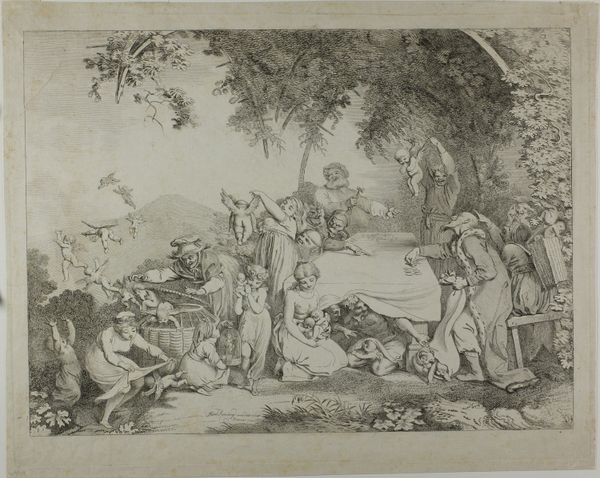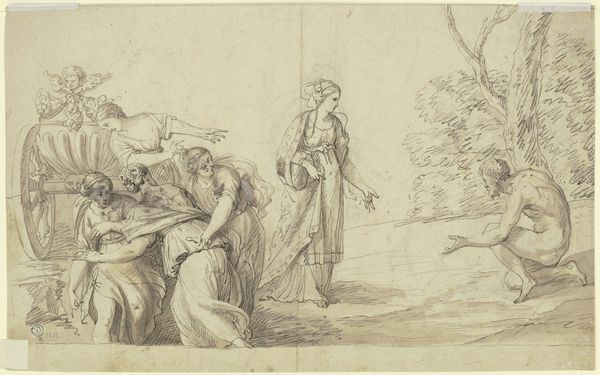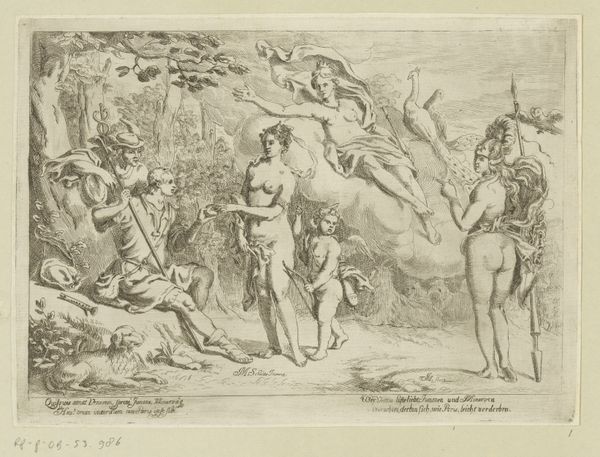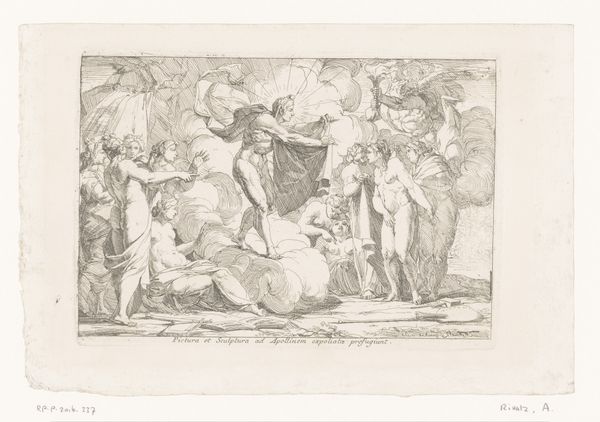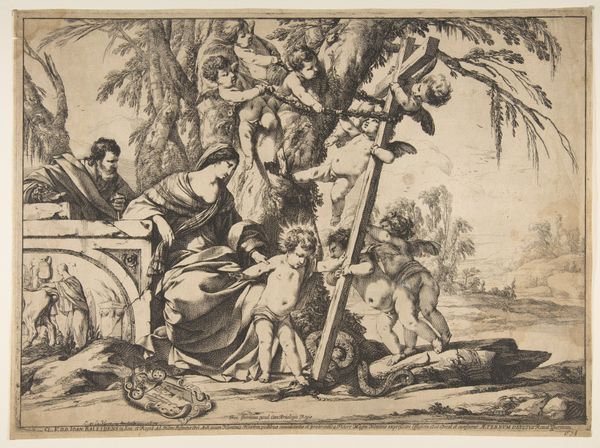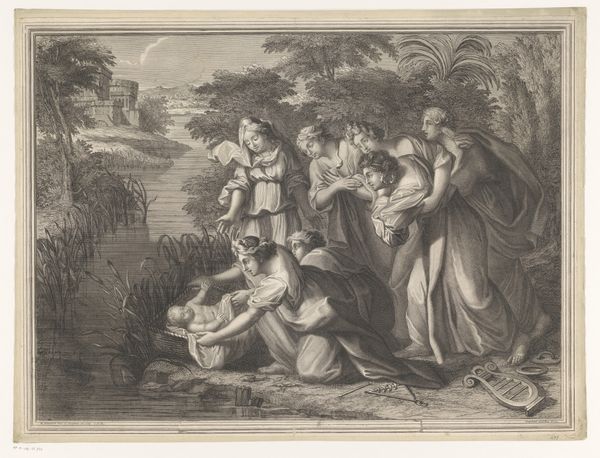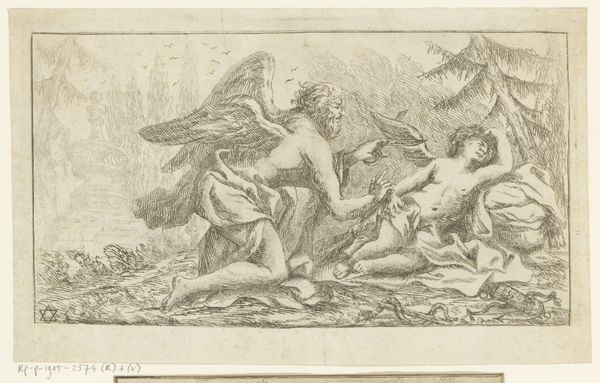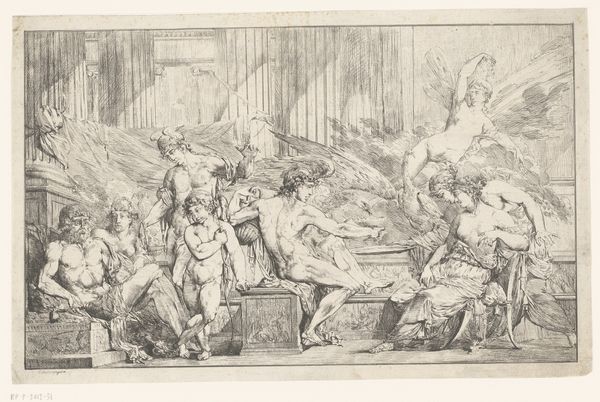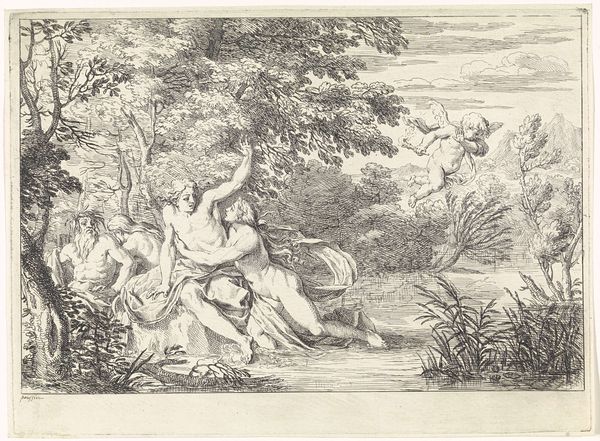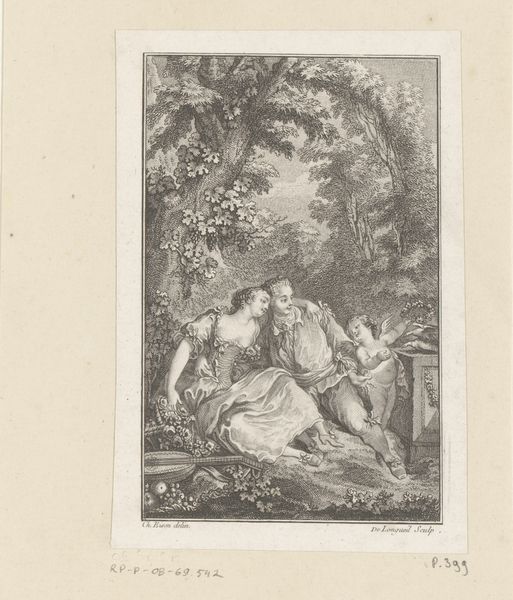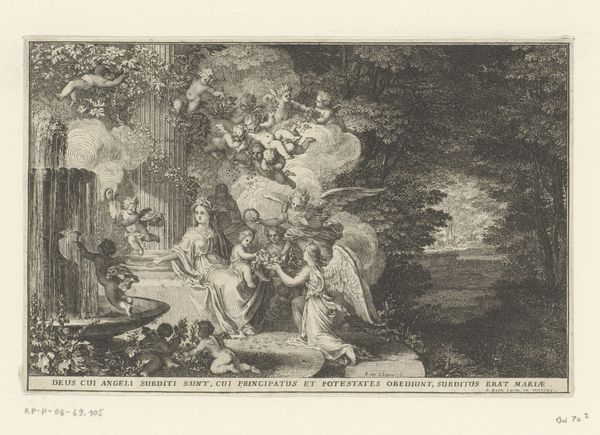
Dimensions: Plate: 6 7/16 × 9 15/16 in. (16.3 × 25.2 cm) Sheet: 8 7/16 × 11 5/16 in. (21.5 × 28.8 cm)
Copyright: Public Domain
Alexander Runciman created this print, Perseus and the Sleeping Medusa, sometime in the late 18th century using etching. It’s a pretty straightforward depiction of the Greek myth, right? Perseus, aided by Athena, sneaking away after beheading Medusa. But let’s consider this in the context of its time. Think about the stories we tell, and who gets to tell them. Runciman, a Scottish artist, was working in a period where male artists dominated the scene, often shaping narratives to uphold certain social orders. Here, Medusa is literally disempowered in sleep, her story silenced, while Perseus is the hero. What if we shift the focus? What does it mean to see Medusa not as a monster but as a woman punished, her narrative stolen and demonized? How might the story change if Medusa were telling it? This image, like many from its time, perpetuates a certain viewpoint, but it also invites us to question whose stories are told and whose are left unheard. Think about how this affects our understanding and empathy.
Comments
No comments
Be the first to comment and join the conversation on the ultimate creative platform.
